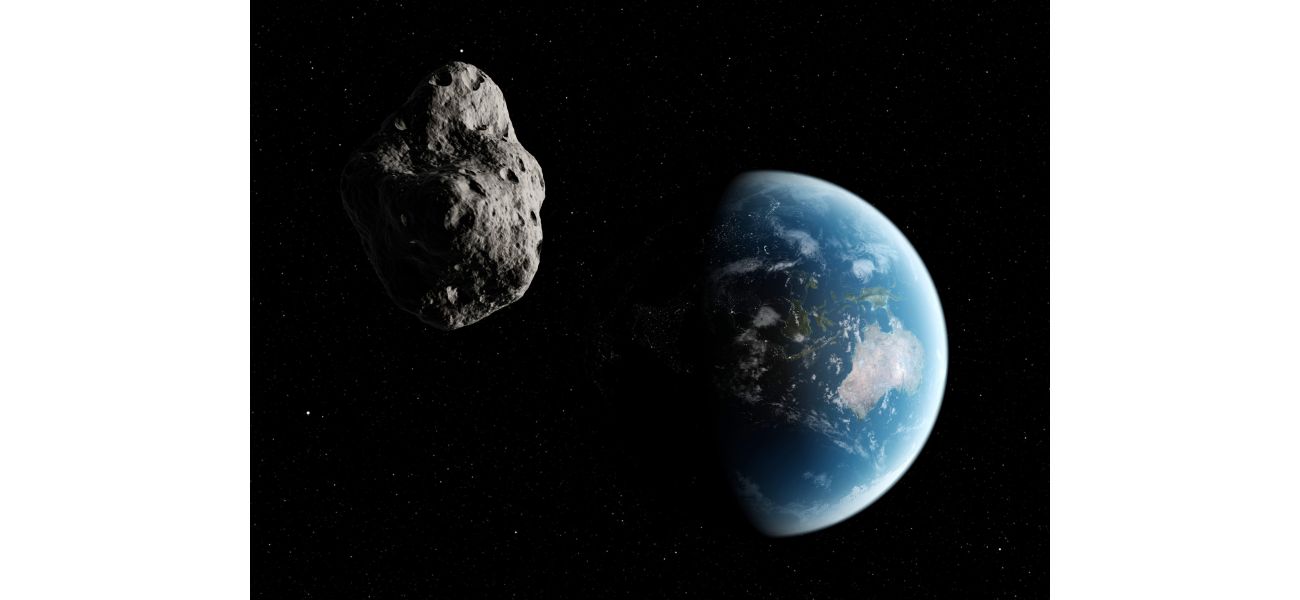Earth will temporarily have a second moon for 57 days.
We will be interacting with a different moon, but only briefly.
September 24th 2024.

For a short period of time, we will have two moons in the sky, a rare and exciting event for Earth. Our long-standing relationship with the moon has lasted for billions of years, so she has no reason to feel threatened by the new addition. The newcomer, an asteroid aptly named 2024 PT5, will be captured by our planet's gravity on September 29, bringing with it a new companion for 57 days.
Compared to the moon itself, 2024 PT5 is just a tiny speck, measuring only ten meters long. It will orbit our planet for a brief period before returning to space on November 25 after 56.6 days. The American Astronomical Society reported on this new mini-moon in their Research Notes, stating that Near-Earth objects approaching at close range can sometimes experience "mini-moon events" where their geocentric energy becomes negative for a short time.
Excitement for the mini-moon has been building, with astronomer Tony Dunn tweeting about its upcoming arrival on September 10, 2024. However, we shouldn't get too attached to this new mini-moon as it won't be as faithful as our trusty old moon. In fact, we have had bonus moons in the past, like the one we had from July 2006 to July 2007, which only briefly orbited Earth.
There is some debate about whether 2024 PT5 can be considered a true mini-moon as it is not expected to complete a full loop around Earth. Adding to the mystery, there is a possibility that this asteroid originated from our own moon. Paul Chodas, director of the Center for Near Earth Object Studies at NASA's Jet Propulsion Laboratory, believes that its past motion suggests it may be a piece of ejecta from a past impact on the moon.
It's a fascinating thought that this mini-moon could be part of our own moon's history. According to one theory, our moon was once a part of Earth until a massive impact from another small planet knocked it out. In a way, the arrival of 2024 PT5 could be seen as a brief family reunion.
Unfortunately, this mini-moon will be too small to see with the naked eye, and we will have to rely on advanced telescopes to catch a glimpse of it. But don't worry, it is predicted to return for another visit in 2055, and by then, we may even be able to see it on our smartphones or AR glasses. Until then, let's enjoy this unique and special moment of having two moons in our sky.
Compared to the moon itself, 2024 PT5 is just a tiny speck, measuring only ten meters long. It will orbit our planet for a brief period before returning to space on November 25 after 56.6 days. The American Astronomical Society reported on this new mini-moon in their Research Notes, stating that Near-Earth objects approaching at close range can sometimes experience "mini-moon events" where their geocentric energy becomes negative for a short time.
Excitement for the mini-moon has been building, with astronomer Tony Dunn tweeting about its upcoming arrival on September 10, 2024. However, we shouldn't get too attached to this new mini-moon as it won't be as faithful as our trusty old moon. In fact, we have had bonus moons in the past, like the one we had from July 2006 to July 2007, which only briefly orbited Earth.
There is some debate about whether 2024 PT5 can be considered a true mini-moon as it is not expected to complete a full loop around Earth. Adding to the mystery, there is a possibility that this asteroid originated from our own moon. Paul Chodas, director of the Center for Near Earth Object Studies at NASA's Jet Propulsion Laboratory, believes that its past motion suggests it may be a piece of ejecta from a past impact on the moon.
It's a fascinating thought that this mini-moon could be part of our own moon's history. According to one theory, our moon was once a part of Earth until a massive impact from another small planet knocked it out. In a way, the arrival of 2024 PT5 could be seen as a brief family reunion.
Unfortunately, this mini-moon will be too small to see with the naked eye, and we will have to rely on advanced telescopes to catch a glimpse of it. But don't worry, it is predicted to return for another visit in 2055, and by then, we may even be able to see it on our smartphones or AR glasses. Until then, let's enjoy this unique and special moment of having two moons in our sky.
[This article has been trending online recently and has been generated with AI. Your feed is customized.]
[Generative AI is experimental.]
0
0
Submit Comment





